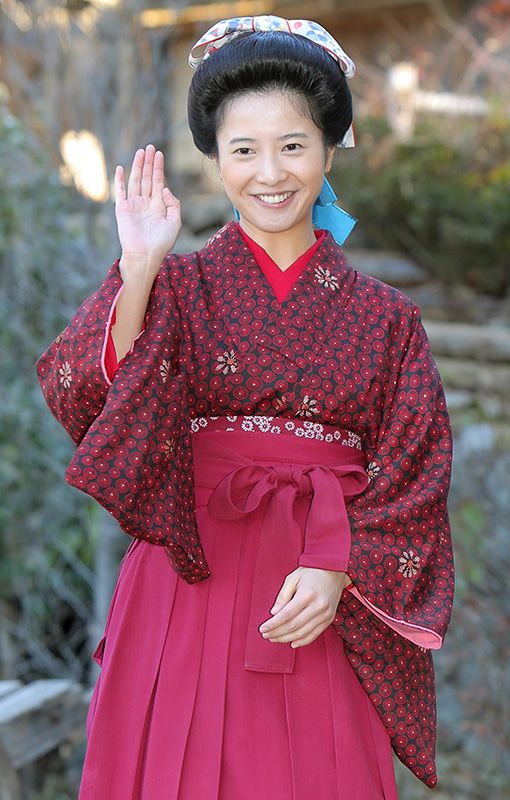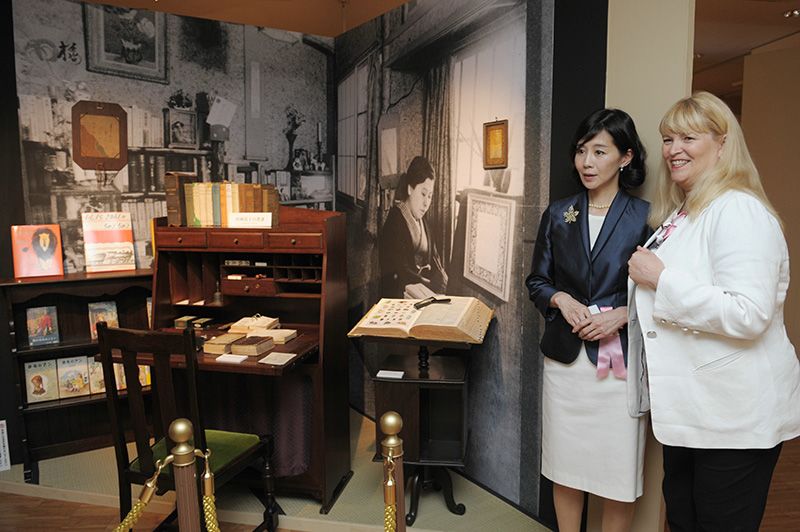
The Best-Loved Canadian Tale in Japan
Culture- English
- 日本語
- 简体字
- 繁體字
- Français
- Español
- العربية
- Русский
It’s IJET weekend. More than 500 translators and interpreters working mainly between Japanese and English are gathered at Big Sight, Tokyo’s international conference center, for the twenty-fifth International Japanese-English Translation Conference.
Since its launch in Hakone a quarter-century ago, the annual conference organized by the Japan Association of Translators has given wordsmiths a forum for sharing tips and tricks to get them through their work. This year the organizers have outdone themselves, putting together a program that has attracted twice as many participants as any previous IJET.
A big draw this year was the keynote speech by Muraoka Eri. The granddaughter of Muraoka Hanako (born Annaka Hana; 1893–1968), whose Japanese translation of Anne of Green Gables was published in 1952, she shared stories about her grandmother’s life and her efforts to bring Anne to Japanese readers.
Muraoka is a big name in Japan now. The quasi public broadcaster NHK runs serialized dramas in 15-minute segments each morning, with a new show beginning twice yearly, and the current one—Hanako to An, or “Hanako and Anne”—is based on her life as presented in Muraoka Eri’s biography of her grandmother, An no yurikago: Muraoka Hanako no shōgai (Anne’s Cradle: The Life of Muraoka Hanako). Much of the program adheres closely to actual events: A young girl born into an impoverished farming family in Yamanashi Prefecture manages to attend the prestigious girls’ school Tōyō Eiwa Jogakuin, where she learns to love the English language under the tutelage of the foreign teachers there. Her aptitude for memorizing poetry, and later for translating it into Japanese, leads to her career as a translator, with Akage no An, the Japanese edition of Canadian writer Lucy Maud Montgomery’s novel set on Prince Edward Island, as her most famous work.
Looking Back at Hanako’s Early Life
 Actress Yoshitaka Yuriko plays Hanako in the NHK drama. (© Jiji)
Actress Yoshitaka Yuriko plays Hanako in the NHK drama. (© Jiji)
As Muraoka Eri noted, though, not everything in the NHK version is true to life. The characters use a dictionary as a pressing stone to make Japanese pickles—something that the real Hanako would never have done with such a valuable and valued possession. While the actual translator was never much of a drinker, in the show she drinks so much wine that she passes out. To great laughter, our keynote speaker today proclaimed: “Finally I realized that this was all an advertising campaign of sorts for Yamanashi wine!”
In the show, Hanako’s Yamanashi home is a warm, welcoming place to return to. In real life, though, she had little desire to spend time there after leaving the country for school and city life.
Perhaps naturally, given the years she lived through, Muraoka Hanako’s life was hard at times, stretching from grinding childhood poverty to the Great Tokyo Earthquake of 1923 and the destruction and hardship of the war. The darkest hour, explained her granddaughter, was the death of her six-year-old son. “My grandmother was able to recover quickly from the blow of the 1923 quake, but not from this loss. She considered abandoning the Christian faith she had adopted in her school years, but in the end remained faithful, inspired by the Bible verse about how ‘God so loved the world that he gave his one and only son.’” Giving her love to the children of Japan by sharing with them the English-language stories she cherished became her way of dealing with the loss.
A Wide Range of Work
She was blessed in the encounters she made during these years. Isabella Blackmore (1863–1942), her teacher at Tōyō Eiwa, demanded no less than her students’ very best, inspiring Muraoka to master English to a considerable level. The poet and translator Katayama Hiroko (1878–1957) was a mentor to Muraoka and comforted her greatly after her son died. (In addition to producing some of the first translations into Japanese of Irish literature, Katayama is known for the praise she received from the great author Akutagawa Ryūnosuke: “Finally I have met a woman who can be called my equal in the arena of words.”)
Muraoka’s bibliography of translated works is extensive. According to her granddaughter, she did a range of other work, too, including simultaneous translation—not interpreting. When US President Franklin Roosevelt was scheduled to give a speech at 6:00 AM Japan time, she was in the radio studio of what is now NHK. The clerical staff listened to the speech as it was broadcast, typed it up, and handed her the pages. She translated these into Japanese on the spot, handing her papers to the announcer, who read the speech in Japanese an hour later that morning.
Muraoka received her copy of Anne of Green Gables in 1939 or so. The details are unclear, but she probably started translating it around 1943, completing the bulk of the work during the war. The English book and the handwritten pages of her translation were the possessions she grabbed and took with her whenever the air raid sirens went off. According to Muraoka Eri, the text meshed perfectly with her grandmother’s own childhood: a tale of a young girl in a pastoral setting, a love of poetry. (Even Anne’s insistence that her name be spelled with an e to make it “more distinguished” mirrors Hana’s own change of her name to Hanako, which figures largely in the TV drama as well.)
After the war, Japanese publishing was in a shambles. The censorship of the Allied occupation forces and the lack of money in the industry meant there was no chance to print new things. But around 1950 things began to start up again. The publisher Mikasa Shobō took a chance on this translation of this book by an unknown (to Japanese readers) author and printed it in 1952. And the rest is history—a history of success for the book in Japan that is often surprising to those of us from the English-speaking world, where Montgomery’s book is not such a famous work of children’s literature.
Finding Familial Love in Books
When the publisher suggested the title Akage no An, literally “Red-Haired Anne,” Muraoka hated it. She wanted to call it Madobe ni yoru shōjo, or “The Little Girl at the Window,” instead. When she shared this idea with her daughter, though, she was told in no uncertain terms that was a terrible title, and the publisher’s suggestion was better. “It’s girls her age who will be the readers of this book,” she realized. The next day she called Mikasa Shobō, apologized, and went with Akage no An.
Muraoka Eri’s grandmother passed away when she was just one. Her sister Mie is eight years older, and has memories of reading books together with Hanako. “We had so many books in our home signed ‘To Mii-chan, with love from Grandma.’ I only had the hand-me-downs. Every time I opened a book to read, I had to stare at how much my grandmother loved my sister, never me!” Before she died, though, Hanako did put her youngest granddaughter’s name in a book—one of her own, in which she wrote that young children should never be kept apart from their mothers for long.
 Kate MacDonald Butler (right), granddaughter of L. M. Montgomery, and Muraoka Eri visit an exhibition on the author and her translator in Tokyo. (© Jiji)
Kate MacDonald Butler (right), granddaughter of L. M. Montgomery, and Muraoka Eri visit an exhibition on the author and her translator in Tokyo. (© Jiji)
“My mother and sister were out one day, and Grandma was at home taking care of me. I cried and cried, and she could find no way to console or distract me. At around this time she was planning her first trip to Prince Edward Island, and my mother was to accompany her, but this made her rethink her plans. A week later she was felled by a stroke.
“She never made it to Prince Edward Island, although she planned trips a number of times. Something always came up that took precedence—caring for her husband, who was frequently sick, or making sure my mother stayed with me. In the end, though, it may have been for the best that the island she knew was the perfect one she had created with her translation.”
(Banner photo: The Prince Edward Island house that inspired the residence in Anne of Green Gables. Courtesy Robert Hiscock.)
literature translation NHK Montgomery Anne of Green Gables Muraoka Eri Muraoka Hanako